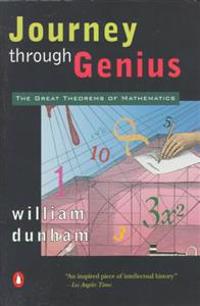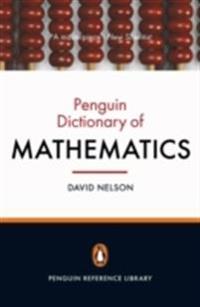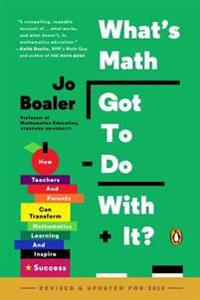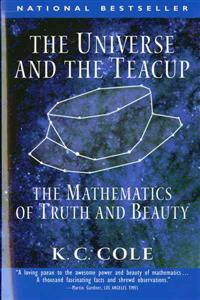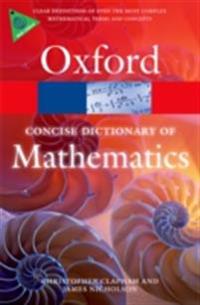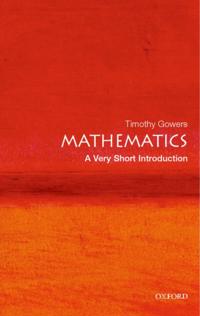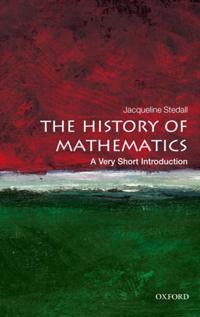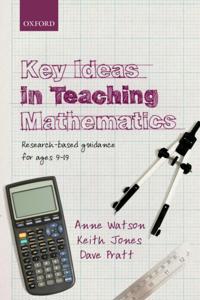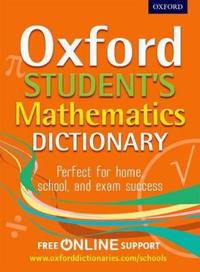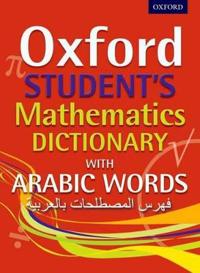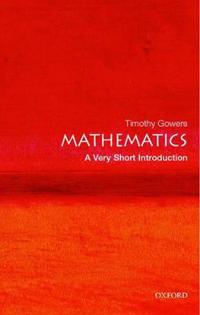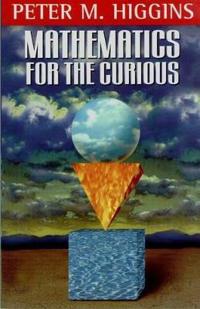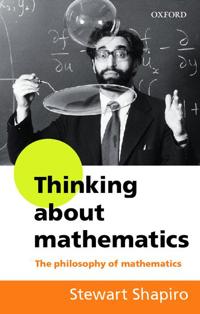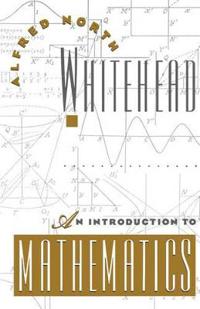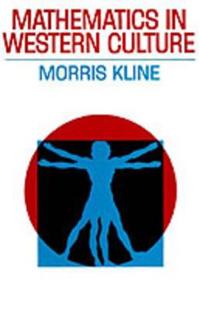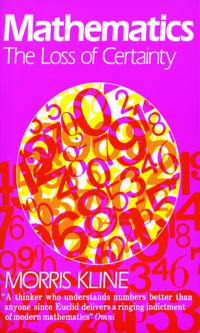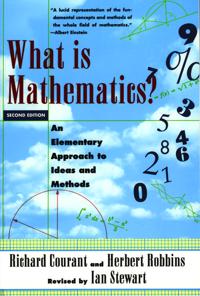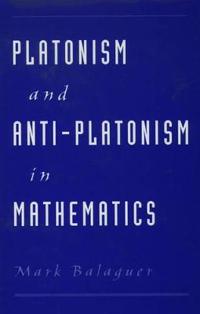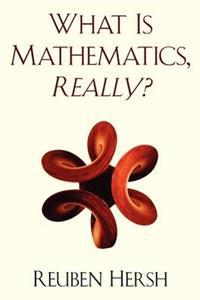Journey Through Genius: The Great Theorems of Mathematics (Häftad)
avWilliam Dunham
ISBN: 9780140147391 - UTGIVEN: 199108Like masterpieces of art, music, and literature, great mathematical theorems are creative milestones, works of genius destined to last forever. Now William Dunham gives them the attention they deserve. Dunham places each theorem within its historical context and explores the very human and often tur[...]
The Penguin Dictionary of Mathematics (Pocket)
avDavid (EDT) Nelson
ISBN: 9780141030234 - UTGIVEN: 2008-12"The Penguin Dictionary of Mathematics" takes in all branches of pure and applied mathematics, from algebra to mechanics and from number theory to statistics. Invaluable for students at all levels, it is also a useful and versatile source book for economists, business people, engineers, technicians [...]
What's Math Got to Do with It?: How Teachers and Parents Can Transform Mathematics Learning and Inspire Success (Häftad)
avJo Boaler
ISBN: 9780143128298 - UTGIVEN: 2015-03"Highly accessible and enjoyable for readers who love and loathe math." --"Booklist"
A critical read for teachers and parents who want to improve children's mathematics learning, "What's Math Got to Do with It?" is "an inspiring resource" ("Publishers Weekly"). Featuring all the important advice[...]The Universe and the Teacup: The Mathematics of Truth and Beauty (Häftad)
avK. C. Cole
ISBN: 9780156006569 - UTGIVEN: 1999-04K. C. Cole's bestseller "provides fresh insights into the crucial role that mathematics plays" in our lives (San Francisco Chronicle). Mathematics, that breathtaking invention of ours that reveals the tiniest particles of matter and takes us to the outermost reaches of the cosmos, is found by many p[...]
Maths in Action - Advanced Higher Mathematics 2 (Pocket)
avEdward C. K. Mullan, Peter W. Westwood, Clive Chambers
ISBN: 9780174315421 - UTGIVEN: 2000-11-16Maths in Action - Advanced Higher Mathematics 3 (Pocket)
avEdward C. K. Mullan, Clive Chambers, E.C.K. Mullan, Peter W. Westwood
ISBN: 9780174315438 - UTGIVEN: 2001-02-16Mathematics and Scientific Representation
ISBN: 9780190201395 - UTGIVEN: 2014-12Mathematics plays a central role in much of contemporary science, but philosophers have struggled to understand what this role is or how significant it might be for mathematics and science. In this book Christopher Pincock tackles this perennial question in a new way by asking how mathematics contri[...]
Concise Oxford Dictionary of Mathematics
ISBN: 9780191044618 - UTGIVEN: 2014-05Authoritative and reliable, this A-Z provides jargon-free definitions for even the most technical mathematical terms. With over 3,000 entries ranging from Achilles paradox to zero matrix, it covers all commonly encountered terms and concepts from pure and applied mathematics and statistics, for exam[...]
Symmetry and the Monster: One of the greatest quests of mathematics
ISBN: 9780191579387 - UTGIVEN: 2015-06The hunt for the 'Monster' of symmetry is one of the great mathematical quests, alongside Fermat's Last Theorem, the Riemann Hypothesis, and Poincar--eacute--; Conjecture. The Monster is a giant snowflake in 196,884 dimensions - the largest exception to our neat classifications of symmetry, wi[...]
Mathematics: A Very Short Introduction
ISBN: 9780191579417 - UTGIVEN: 2015-06The aim of this book is to explain, carefully but not technically, the differences between advanced, research-level mathematics, and the sort of mathematics we learn at school. The most fundamental differences are philosophical, and readers of this book will emerge with a clearer understanding of pa[...]
History of Mathematics: A Very Short Introduction
ISBN: 9780191633966 - UTGIVEN: 2012-02Mathematics is a fundamental human activity that can be practised and understood in a multitude of ways; indeed, mathematical ideas themselves are far from being fixed, but are adapted and changed by their passage across periods and cultures. In this Very Short Introduction, Jacqueline Stedall explo[...]
Key Ideas in Teaching Mathematics
ISBN: 9780191643415 - UTGIVEN: 2013-02Big ideas in the mathematics curriculum for older school students, especially those that are hard to learn and hard to teach, are covered in this book. It will be a first port of call for research about teaching big ideas for students from 9-19 and also has implications for a wider range of students[...]
Key Ideas in Teaching Mathematics
ISBN: 9780191643422 - UTGIVEN: 2013-02Big ideas in the mathematics curriculum for older school students, especially those that are hard to learn and hard to teach, are covered in this book. It will be a first port of call for research about teaching big ideas for students from 9-19 and also has implications for a wider range of students[...]
Oxford Student's Mathematics Dictionary (övrigt)
ISBN: 9780192733573 - UTGIVEN: 2013-05The Oxford Student's Mathematics Dictionary supports the curriculum and gives comprehensive coverage of the key maths terminology that students in secondary school need for GCSE and beyond. The dictionary contains over 1000 mathematical concepts in alphabetical order, with related words listed under[...]
Oxford Student's Mathematics Dictionary with Arabic Words (övrigt)
ISBN: 9780192737069 - UTGIVEN: 2013-10The Oxford Student's Mathematics Dictionary with Arabic Words supports the curriculum and gives comprehensive coverage of the key maths terminology that students in secondary school need for secondary level exams and beyond complete with their Arabic translations. The dictionary contains over 1000 m[...]
Mathematics (Häftad)
avTimothy Gowers
ISBN: 9780192853615 - UTGIVEN: 200208The aim of this book is to explain, carefully but not technically, the differences between advanced, research-level mathematics, and the sort of mathematics we learn at school. The most fundamental differences are philosophical, and readers of this book will emerge with a clearer understanding of pa[...]
Mathematics for the Curious (Storpocket)
avPeter M. Higgins
ISBN: 9780192880727 - UTGIVEN: 199803When do the hands of a clock coincide? How likely is it that two children in the same class will share a birthday? Should you play Roulette or the Lottery? How do we calculate the volume of a doughnut? Why does the android Data in Star Trek lose at poker? What is Fibonacci's Rabbit Problem? Many thi[...]
Thinking About Mathematics (Häftad)
avStewart Shapiro
ISBN: 9780192893062 - UTGIVEN: 200007This unique text by Stewart Shapiro looks at a range of philosophical issues and positions concerning mathematics in four comprehensive sections. The first describes questions and issues about mathematics that have motivated philosophers almost since the beginning of intellectual history. Part II i[...]
An Introduction to Mathematics
ISBN: 9780195002119 - UTGIVEN: 1992-10This distinguished little book offers a brisk introduction to a series of mathematical concepts, a history of their development, and a concise summary of how today's reader may use them.[...]
Mathematics in Western Culture.
ISBN: 9780195007145 - UTGIVEN: 1964-12Reveals the important contributions of mathematics to the physical and social sciences, philosophy, religion, literature, and art.[...]
Mathematics (Häftad)
avMorris Kline
ISBN: 9780195030853 - UTGIVEN: 198206This work stresses the illogical manner in which mathematics has developed, the question of applied mathematics as against 'pure' mathematics, and the challenges to the consistency of mathematics' logical structure that have occurred in the twentieth century.[...]
Philosophy of Mathematics and Mathematical Practice in the Seventeenth Century (Inbunden)
avPaolo Mancosu
ISBN: 9780195084634 - UTGIVEN: 1996-05-23What is Mathematics? (Häftad)
avRichard Courant, Herbert Robbins
ISBN: 9780195105193 - UTGIVEN: 199607For more than two thousand years a familiarity with mathematics has been regarded as an indispensable part of the intellectual equipment of every cultured person. Today, unfortunately, the traditional place of mathematics in education is in grave danger. The teaching and learning of mathematics has [...]
What Is Mathematics, Really? (Häftad)
avReuben Hersh
ISBN: 9780195130874 - UTGIVEN: 199905Most philosophers of mathematics treat it as isolated, timeless, ahistorical, inhuman. Reuben Hersh argues the contrary, that mathematics must be understood as a human activity, a social phenomenon, part of human culture, historically evolved, and intelligible only in a social context. Hersh pulls t[...]

